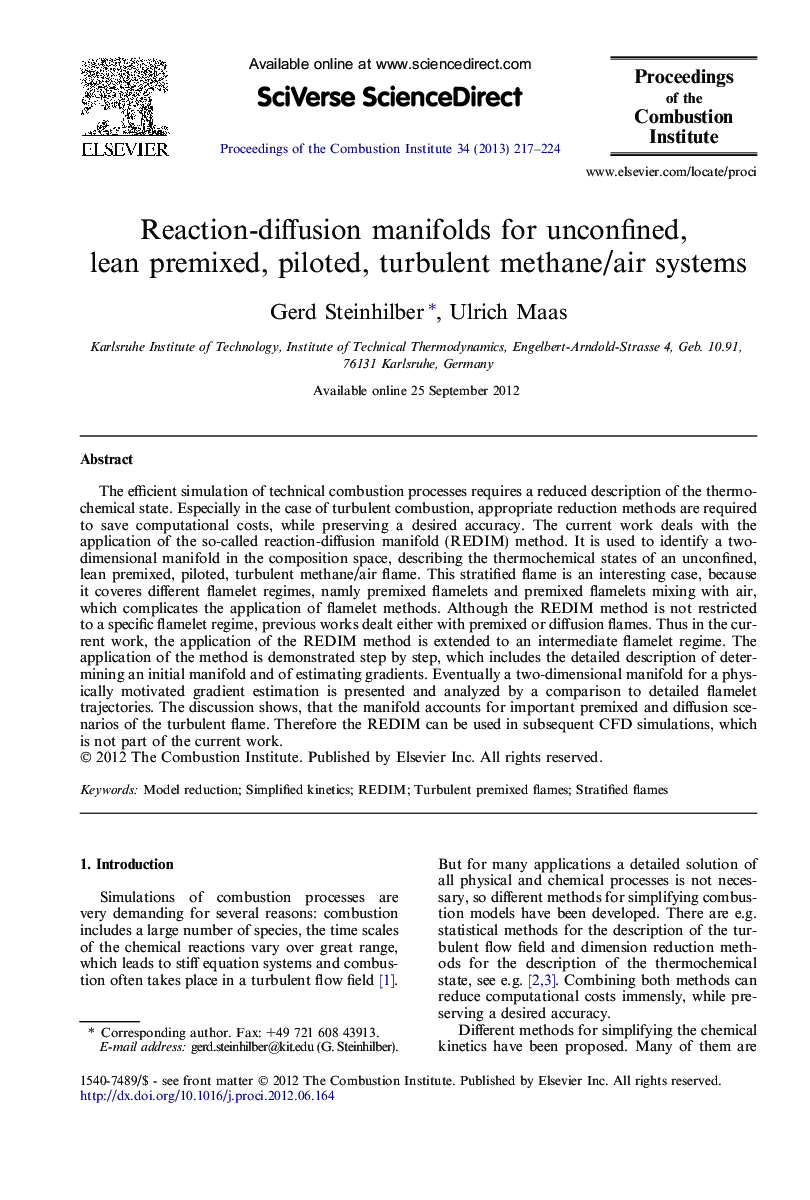| Article ID | Journal | Published Year | Pages | File Type |
|---|---|---|---|---|
| 241119 | Proceedings of the Combustion Institute | 2013 | 8 Pages |
The efficient simulation of technical combustion processes requires a reduced description of the thermochemical state. Especially in the case of turbulent combustion, appropriate reduction methods are required to save computational costs, while preserving a desired accuracy. The current work deals with the application of the so-called reaction-diffusion manifold (REDIM) method. It is used to identify a two-dimensional manifold in the composition space, describing the thermochemical states of an unconfined, lean premixed, piloted, turbulent methane/air flame. This stratified flame is an interesting case, because it coveres different flamelet regimes, namly premixed flamelets and premixed flamelets mixing with air, which complicates the application of flamelet methods. Although the REDIM method is not restricted to a specific flamelet regime, previous works dealt either with premixed or diffusion flames. Thus in the current work, the application of the REDIM method is extended to an intermediate flamelet regime. The application of the method is demonstrated step by step, which includes the detailed description of determining an initial manifold and of estimating gradients. Eventually a two-dimensional manifold for a physically motivated gradient estimation is presented and analyzed by a comparison to detailed flamelet trajectories. The discussion shows, that the manifold accounts for important premixed and diffusion scenarios of the turbulent flame. Therefore the REDIM can be used in subsequent CFD simulations, which is not part of the current work.
